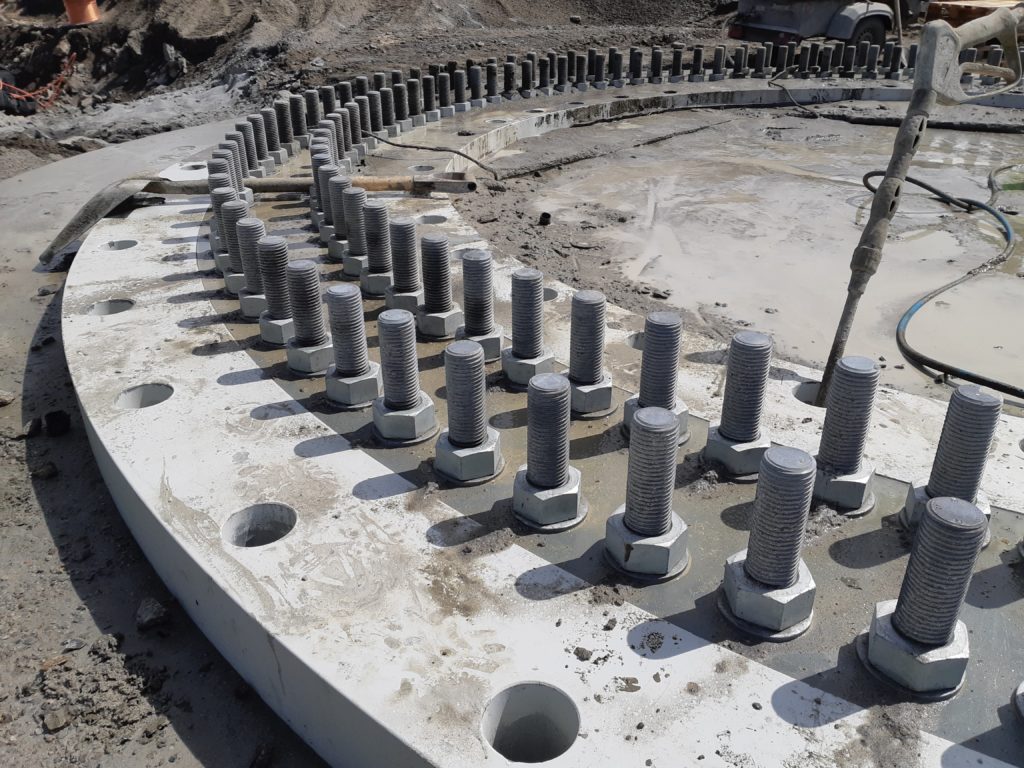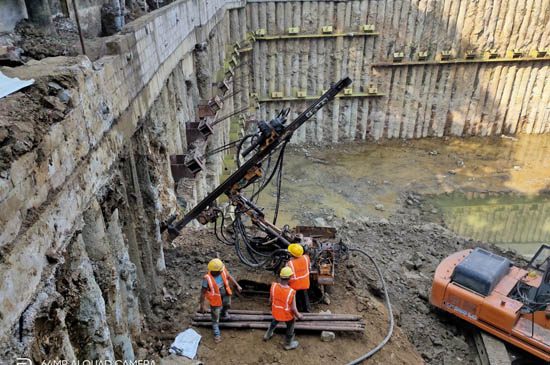Williams Anchors: Relied On Solutions for Deep Foundation and Geotechnical Needs
Wiki Article
Innovative Rock Anchors for Improved Construction Support
Ingenious rock anchors have progressively come to be a prime focus in construction engineering, specifically as projects demand higher security and efficiency. With developments in products and technology, modern-day anchoring services such as grouted and post-tensioned designs supply considerable enhancements in load-bearing capacity and flexibility to diverse geological conditions. The integration of sophisticated modeling techniques even more enhances efficiency optimization, yet the full possibility of these advancements remains to be discovered. As we take into consideration the ramifications of wise sensors and sustainable methods, one must ask: exactly how will these growths redefine the future of building assistance?Development of Rock Anchors
The advancement of rock anchors has dramatically changed construction methods over the past century. Rock anchoring methods were rudimentary, relying on simple mechanical gadgets and basic materials. As engineering disciplines progressed, so did the understanding of geological problems and the requirement for dependable securing systems - Williams Anchors. The mid-20th century saw the intro of high-strength steel tendons, which supplied boosted load-bearing abilities, enabling even more ambitious construction tasks in difficult terrains.In tandem with improvements in products science, the development of grouting strategies improved the bond between the support and bordering rock, bring about increased security and resilience. The assimilation of modern technology right into style and testing processes has caused much more precise and effective installment methods, even more maximizing performance. Computer system modeling and simulations currently allow engineers to forecast anchor habits under numerous problems, boosting safety and dependability.
Furthermore, the growing focus on sustainability within building methods has led to developments in environment-friendly materials and methods for rock anchoring. On the whole, the trip of rock anchors shows the construction sector's adaptation to both technical developments and the raising intricacy of modern-day design difficulties.

Kinds Of Modern Rock Anchors
Modern rock anchors come in a range of types, each developed to satisfy details engineering demands and geological problems. The most usual types include grouted supports, which involve inserting a steel tendon into a drilled opening and filling up the area with cement to create a strong bond with the bordering rock - Williams Anchors. These anchors are commonly made use of in applications requiring high load abilitiesOne more extensively made use of type is the mechanical support, which counts on mechanical tools to protect the support in position without the demand for grouting. These supports are preferred in scenarios where immediate load-bearing ability is essential.
Additionally, there are post-tensioned supports, which are set up tensioned to provide stability to structures such as bridges and keeping walls. These anchors assist to combat tensile forces acting on the framework.
Benefits of Cutting-edge Styles
Advancement in rock anchor layout brings countless advantages that enhance construction effectiveness and architectural integrity. Modern styles utilize innovative materials and design methods to dramatically improve load-bearing abilities. These cutting-edge supports are frequently constructed from high-strength steel or composite materials, which not only minimize weight however likewise improve resistance to rust, making sure long life and reliability in different ecological problems.
Additionally, the usage of useful source computer-aided design (CAD) and finite component evaluation (FEA) enables specific modeling and screening of support performance under real-world problems. This leads to anchors that can be customized to details task needs, enhancing their effectiveness and decreasing the demand for over-engineering, which can be both cost and resource-intensive.

Case Research Studies in Construction
Real-world applications of innovative rock anchor layouts illustrate their transformative impact on building tasks. The anchors were tactically positioned to improve load distribution and reduce settlement, ultimately leading to a more durable foundation.Another substantial example can be found in the expansion of a transportation tunnel. Cutting-edge rock anchors were used to safeguard the passage walls, permitting deeper excavation without compromising safety and security. The application of grouted rock anchors offered enhanced tensile toughness, allowing employees to advance the task immediately.
In a third instance, a major dam project integrated rock anchors to maintain the embankment. Using corrosion-resistant materials in the supports made sure long-lasting sturdiness, reducing maintenance prices and enhancing safety and security criteria.
These instance research studies show the efficiency of innovative rock support designs in dealing with intricate design obstacles, highlighting their vital function in modern building practices. The successful end results highlight the requirement for continued financial investment in sophisticated anchoring technologies to fulfill developing construction demands.
Future Trends in Rock Anchoring
As building and construction demands develop, the future of rock anchoring is positioned for significant developments that imp source will boost security and effectiveness in numerous applications - Williams Anchors. Emerging technologies, such as smart sensing units and real-time tracking systems, are anticipated to play an important function in the growth of more reputable anchoring solutions. These innovations will certainly permit continuous analysis of anchor performance, making it possible for timely interventions and decreasing risks connected with structural integrityFurthermore, the combination of sustainable products and practices is coming to be progressively essential in the building sector. Future rock anchors may integrate environmentally friendly products that lower ecological influence while maintaining efficiency standards. Furthermore, advancements in products scientific research might cause the growth of high-strength, lightweight supports that enhance installment procedures and lower labor prices.

Final Thought
In conclusion, ingenious rock anchors represent a considerable development in construction support, dealing with the challenges presented by varied geological problems. The development of contemporary designs, consisting of grouted and post-tensioned anchors, enhances load-bearing abilities while promoting stability. Assimilation of advanced modern technologies, such as computer-aided design and wise sensing units, further optimizes efficiency and sustainability. Continued research study and application of these innovations will undoubtedly form the future of construction methods, making sure efficiency and go now environmental obligation.Report this wiki page